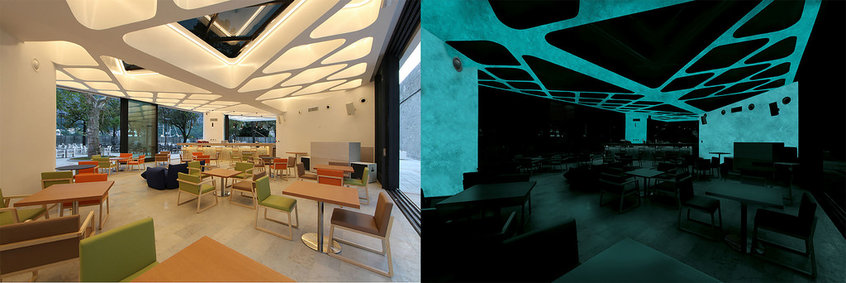A scientist in Mexico has created glowing cement that absorbs solar energy during the day and emits light after sun-down.
Claiming the engineered cement can last a hundred years, he says it could make roads and structures glow in the dark, cutting the cost of street-lighting.
The patent is the first for Mexico’s University of San Nicolas Hidalgo, says the researcher behind the invention, Dr. José Carlos Rubio, according to Investigación y Desarrollo.
“Nine years ago, when I started the project, I realised there was nothing similar worldwide, and so I started to work on it,” Rubio said. “The main issue was that cement is an opaque body that doesn’t allow the pass of light to its interior.”
Rubio said that ordinary cement is a powder which, when water is added, dissolves and starts to become a gel. However, in the process crystalline flakes are formed as unwanted by-products.
His work focused on modifying the micro-structure of the cement to eliminate crystals and make it completely gel, which helped it absorb solar energy and return it to the environment as light.
Rubio said that since global cement production amounted to about 4 billion tons in 2015, the market for glowing cement could be huge.

It could make roads and structures glow in the dark (Investigación y Desarrollo)
While most fluorescent materials are made from plastic and have an average of life span of three years under harsh UV rays, this new cement is sun-resistant and will last 100 years, Rubio said.
He added that it can emit light for around 12 hours.
Currently his cement gives off blue or green light only. He claims that the light intensity can be regulated to avoid dazzling drivers or cyclist.
“Due to this patent – the first one for this university – others have surfaced worldwide,” Rubio said.
The research is in its commercialisation stage, with its inclusion in plaster and other construction products also being explored.
Top photograph: The new cement is sun-resistant and will last 100 years, scientist says (Investigación y Desarrollo)
Comments
Comments are closed.







Is this project practical and how can I have it vfor my project
I love your idea and will be looking forward to a new drive way! Good job.
What an exiting material. Hope i can work with a project using a material like this.
Is it toxic? What does it emit? How does it effect other species who come into contact with it? How does it breakdown after 100 years?
Felicidades! Who says Mexico is a 3rd-world country; a teenager added colors to b&w TV!
Good luck with this one…I’d like it for my project in SW Algarve
Interesting. I think the product itself is amazing. We just have to imagine more possibilities of how we can use it. If this product is mass produced and the costs cut down, it could be a boon for the developing countries, where uninterrupted electricity is still a struggle.
This will be particularly good for lighting roads and walkways especially in countries like mine , Nigeria where there is a huge energy deficit. application of this cement to fence walls along neighborhood roads will surely illuminate the streets and save Municipalities huge amount of money.
Very interesting, I would use it on paved trails to delineate the edge. Does it need direct sunlight? or just daylight. Several of the trails I am thinking off are shaded by trees during the day.
hallo. I want a small amount of this to play with please.
This is indeed a very creative/innovative “work of Art”. Concrete is often seen as a dull mixture of cement, fine and coarse aggregates…not forgetting water. If this innovation has a Patent, this is awesome! It’s application is far and wide and I guess demand will be extremely high. I would like to know more about this product. Best wishes…
Toxic? It’s concrete. Did you read the article Klara? It emits LIGHT…not something toxic. Other species? Again…CONCRETE! Please take your agenda somewhere else Klara….some of us are trying to make the world a better place here. This is an amazing invention….READ the article…you might actually like it.
The image at the beginning of this article with a pair of legs standing on a glowing star path is remarkably similar to Roosegaard’s (Hollands) work published in 2014.
https://goo.gl/images/Dt9OKQ